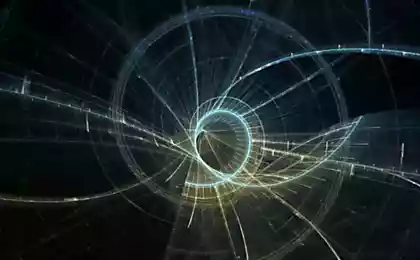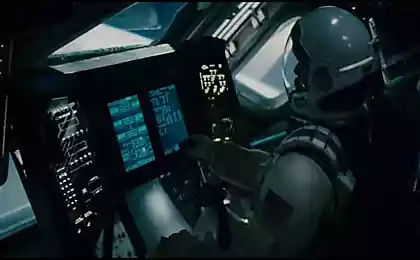211
Quantum processes in the cosmos create unexpected chemistry
It turns out that there can be organic chemical reactions in space that we are not even aware of. It sounds ambiguous, because the cosmos is large, but scientists are competent enough to know which elements can form spontaneously and which cannot. In 2012, scientists discovered molecules of the methoxy group containing carbon, hydrogen and oxygen in the Perseus molecular cloud 600 light years from Earth. However, the scientists were unable to reproduce these molecules in the laboratory, allowing the reagents to condense on dust particles, thereby leaving the process of formation of these molecules secret.
The answer was found in quantum oddities that allow molecules to form in space, contrary to classical rules of chemistry. In short, interstellar space is a kind of quantum chemistry laboratory that can produce a range of diverse organic molecules that astronomers have discovered in space.
Because of the cold temperatures in the interstellar clouds of molecular gas, the barrier to activation of most chemical reactions seemed too high. The low temperature prevents molecules drifting in space from gaining the energy needed to break bonds, but certain reactions can still occur as different molecules stick to the surface of cosmic dust. They may have enough time to gain the energy they need to react.
"There's a certain law that says that if you lower the temperature, the reaction rate slows down," says Duane Heard of the University of Leeds.
But methoxy can also be created by combining hydroxyl radicals and methanol gas that are present in space, through a quantum tunneling process that can give hydroxyl radicals a chance to “pierce” through the energy barrier rather than overcome it. Heard and his colleagues found that despite the presence of the barrier, the reaction rate between hydroxyl radicals (OH) and methanol — one of the most abundant organic molecules in space — is almost two orders of magnitude higher at -210 degrees Celsius than at -73 degrees Celsius. At low temperatures, when molecules slow down, the chance of tunneling increases.
"At normal temperatures, they just bump into each other, but at low temperatures, they hang out together for quite a while," says Heard.
The team also noted the formation of a radical methoxy molecule created by the formation of a hydrogen-bound complex that lived long enough to pass through quantum mechanical tunneling. They concluded that this tunneling mechanism for the oxidation of organic molecules by the OH group is widespread in low-temperature interstellar conditions. The reaction occurred 50 times faster using quantum tunneling than at normal room temperature. Empty space is much colder than -210 degrees Celsius, but in clouds of interstellar dust, such a temperature may well occur.
“We’re showing that there can be organic chemistry reactions in space that you didn’t even expect to see,” Heard said.
The image above shows the Perseus molecular cloud at microwave lengths taken by the Planck spacecraft, which sees the movement of electrons through the Milky Way and how dust is warmed by the light of stars. These components of the interstellar medium have been studied at microwave wavelengths for decades. Electrons are known to emit mainly radio waves (low frequencies), while dust particles emit in the far infrared spectrum (high frequencies).
In 1990, there was radiation that could not be explained, and it became known as "abnormal microwave radiation." Several theories have been proposed about its origin, but now the wavelength coverage of Planck’s low-frequency instruments is ideal for observing and characterizing this radiation.
The advantage is that Planck’s combination of instruments gives a much wider coverage of wavelengths, allowing the anomalous radiation to be separated into components and better understand its constituents. Recall that on the basis of radiation analysis, scientists draw conclusions about the chemical composition of deep space objects.
“At present, we are almost certain that the radiation is due to the rotation of nanoscale dust particles, which rotate at speeds up to ten thousand million times per second,” said Clive Dickinson of the University of Manchester. These are the smallest known dust particles, containing 10 to 50 atoms; spinning when they collide with atoms or photons, they emit radiation at frequencies between 10 and 60 GHz.
Recently, the Stardust probe caught seven similar particles from interstellar space. Scientists are getting more and more data to closely analyze all sorts of elements of deep space.
Source: http://hi-news.ru/space/kvantovye-processy-kosmosa-rozhdayut-neozhidannuyu-ximiyu.html
Source: /users/1617
People work more willingly and better when they are led by robots.
Shrubs for hedges — what and where to plant























